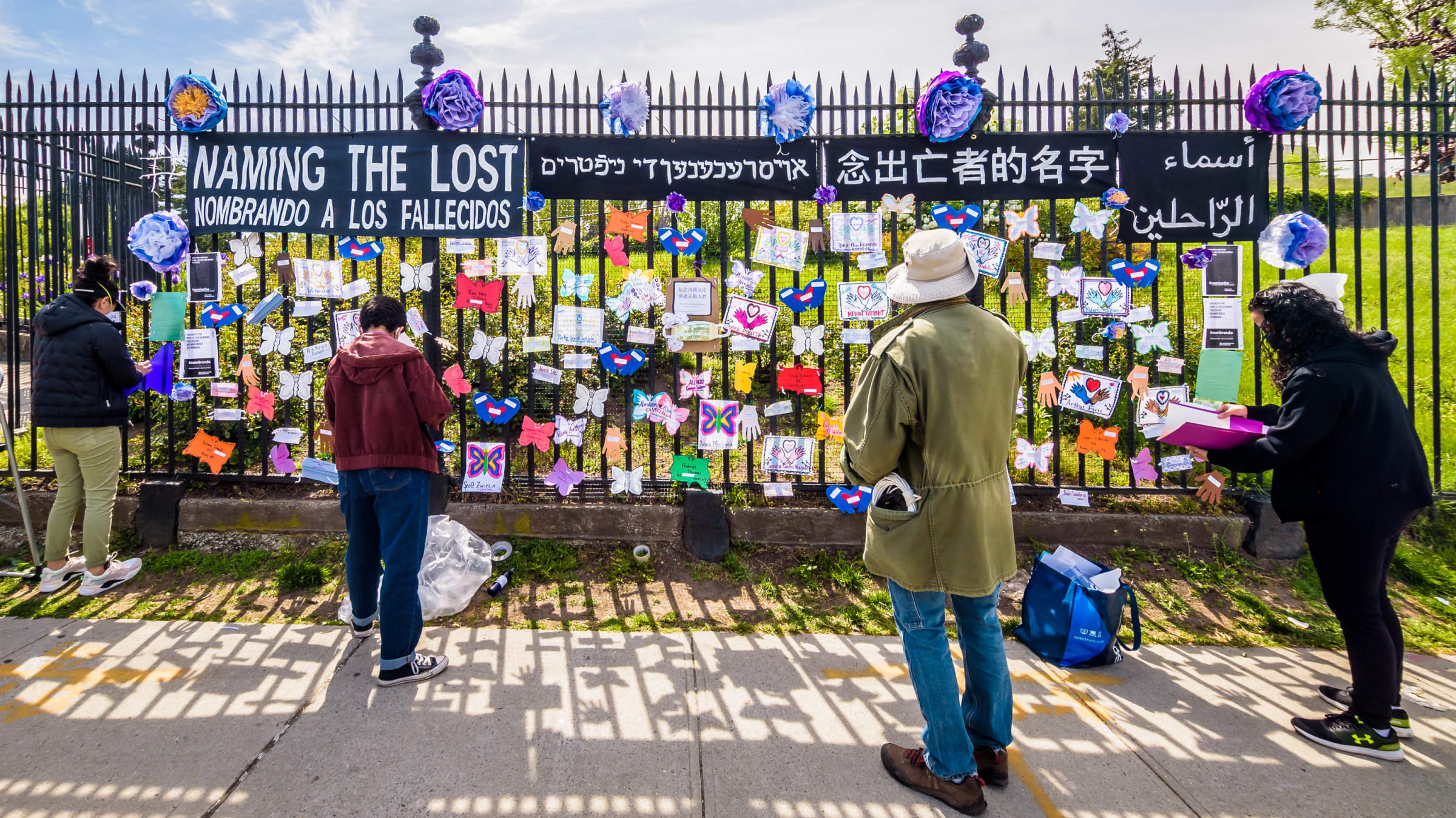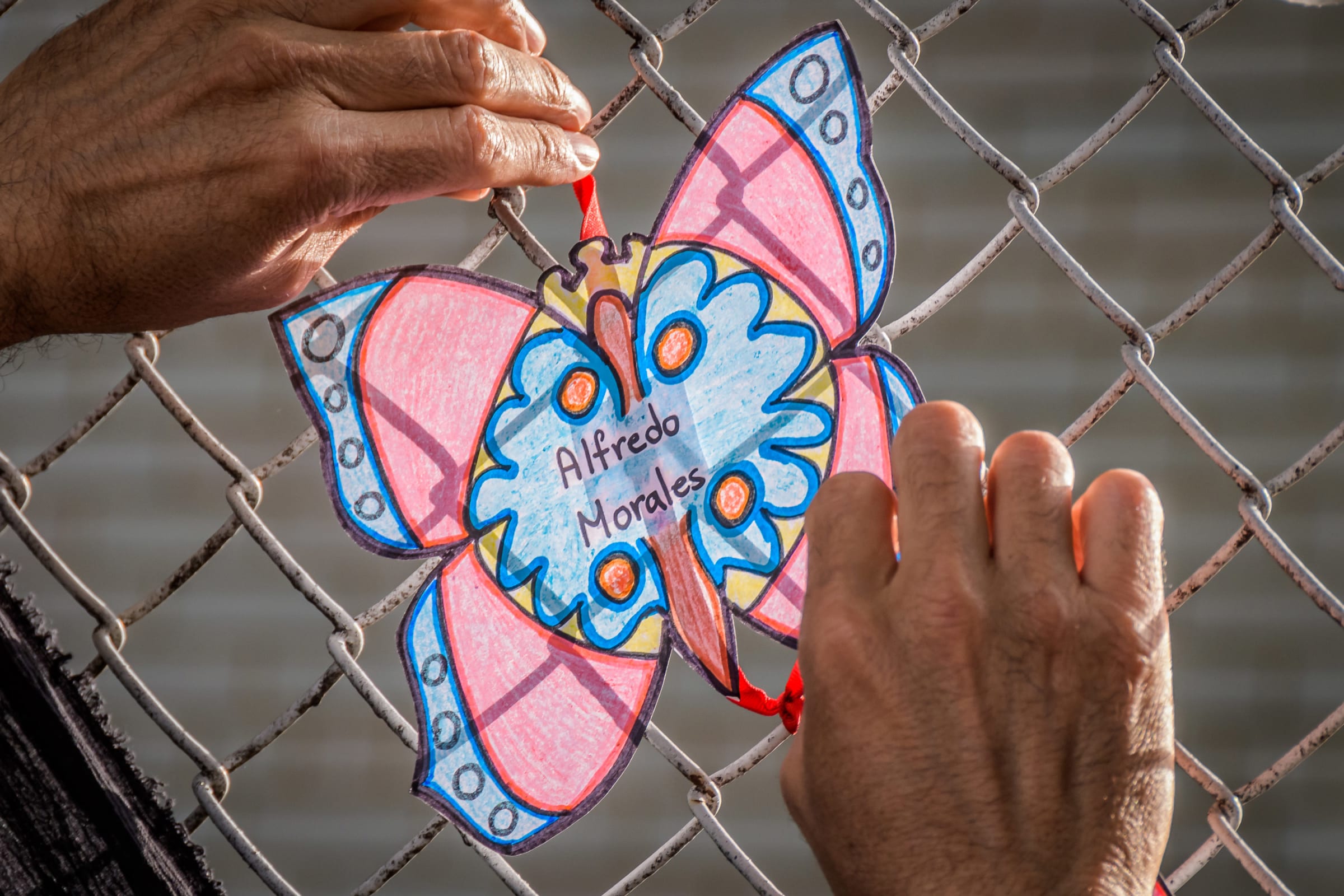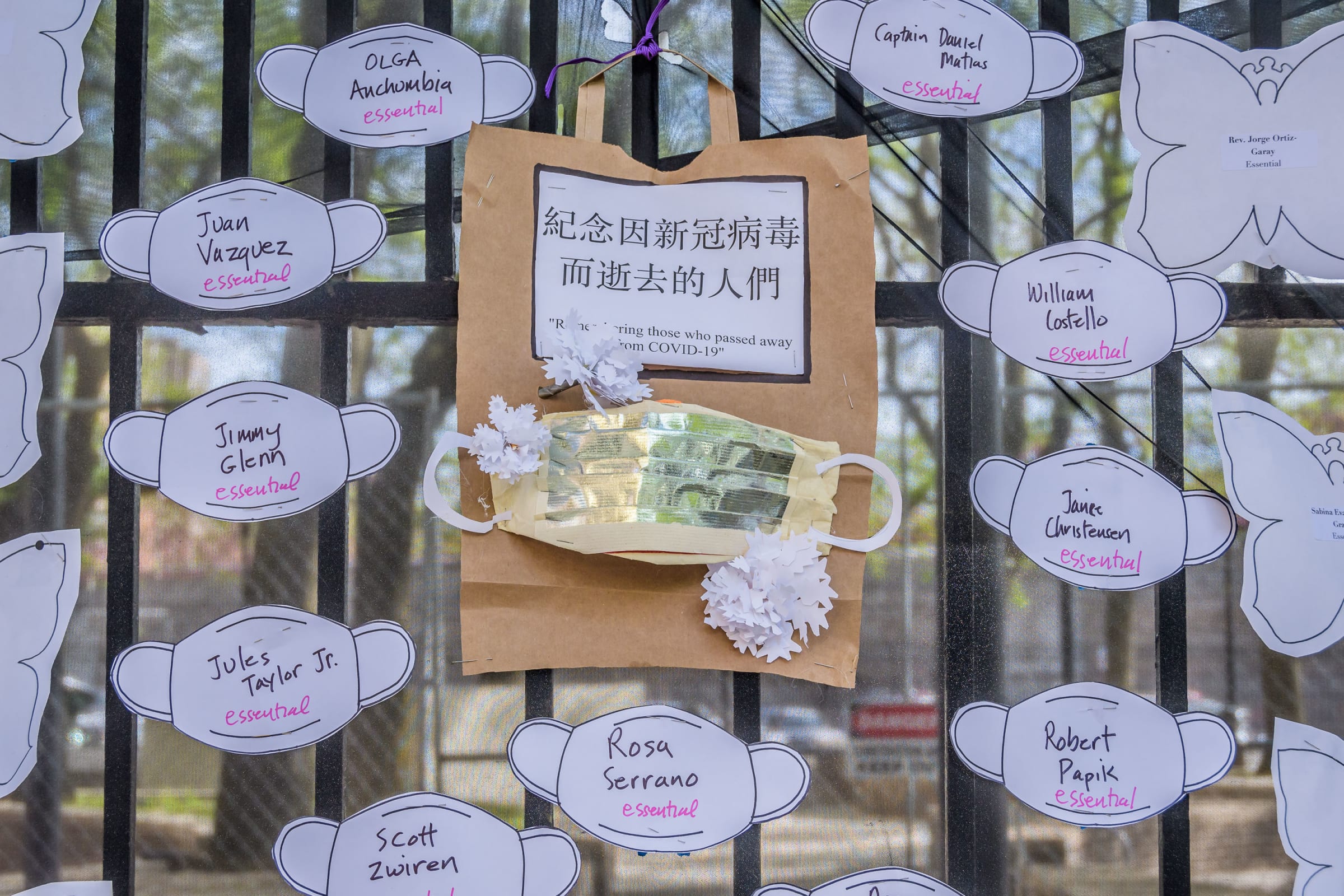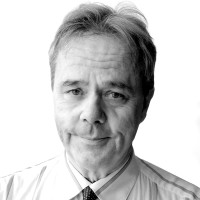Trump Refuses to Mourn Them. We Must.

Erik McGregor
It seems 100,000 is just a number to the president. Others are making sure we remember the names and lives lost.
Cristina Monet Zilkha. Fatima Schmidt. Dez-Ann Romain. Elvester McKoy. Alonzo Garza-Salazar. Idris Bey.
Those were among the dozens of names written on paper cutouts and posted on the wrought iron fence outside Brooklyn’s Green-Wood Cemetery as the national COVID-19 death toll approached 100,000.
The tombstones and mausoleums and statuary in the 478 acres beyond the fence were made of materials meant to defy time and preserve the memory of each individual. The burials had been accompanied by rituals marking the enormity of the loss.
The cutouts on the fence would not likely last a rainstorm, but each produced a name from the numbers when the virus too often caused its victims to die alone and too often cheated families of even a rite of farewell. The name on each bit of paper seemed at the moment more important to note than any of those inscribed in granite and marble.
Cristina Monet Zilkha was a singer. Fatima Schmidt was a teacher. Dez-Ann Romain was a school principal. Elvester McKoy was a New York City correction officer. Alonzo Garza-Salazar was an undocumented immigrant from Mexico who died in a federal detention facility. Idris Bey was an FDNY emergency medical technician who had responded to the World Trade Center on 9/11.
“His ambulance was flattened,” his lifelong friend Nehmiah Chandler told The Daily Beast. “They thought him and his partner was dead as well. But somehow they survived. Unfortunately for him, they breathed in a lot of toxic fumes.”
Bey had scarred lungs as he continued with the FDNY. That could not have helped his chances when he caught COVID-19. His luck gave out. His name speaks of untiring dedication to the very end.
“A public servant and a servant of the public,” Chandler said.
The organizers of the effort to post names of the fallen outside the cemetery and at other locations include 32-year-old Nelini Stamp, who has lost an aunt, Sylvia Stamp, and an uncle, Victor Colon, to the pandemic. Nelini was in her third day of high school on the National Day of Mourning led by President Bush after just under 3,000 Americans perished on 9/11.
“I clearly remember that,” she told The Daily Beast on Saturday. “Who knows if we’ll get it this time around. If we don’t, we’ll go get it ourselves. We’ll show how it’s done, to take care of people and honor people’s lives.”

#NamingTheLost Memorial Installation in the Bronx.
Erik McGregor
Taking care of people and honoring people’s lives do not seem to interest our current president. He did seem to be touched by the death of his friend and fellow real estate developer Stanley Chera. But the tens of thousands of other deaths are a threat to Trump’s self-image and constitute a political liability no matter how often he and his cronies insist his efforts have been a great success. And vulnerability extinguishes empathy in a narcissist.
“One is too many,” he repeatedly says, which is a way of dismissing all the others even as they reach six figures.
Trump is a self-declared “wartime president” who teaches us how not to grieve and to equate freedom with thinking only of ourselves while doing whatever we want to do in the moment. The Washington Post analyzed his 28 hours of utterances during 35 COVID-19 press briefings and determined he spent two hours attacking others, 45 minutes praising himself and his administration, but not even five minutes expressing sympathy for the fallen and their families.
Trump had an opportunity to offer a heartfelt acknowledgement of the magnitude of our losses during his Fox News town hall at the Lincoln Memorial on May 3. The Gettysburg address was right there for inspiration, inscribed in the stone before him. Trump instead simply revised his previous estimate of 40,000 to 50,000.
“Look, we’re going to lose anywhere from 75, 80 to 100,000 people,” he said as casually as if it was just numbers, not individual lives.
He has even proven willing to add to the death count by feeding the fake macho of not wearing a mask and by tweeting encouragement to anti-shutdown crazies.
“LIBERATE MICHIGAN!... LIBERATE MINNESOTA!”
As we near a six-figure death count, Trump sought to please his base by declaring that he was reopening the churches no matter what state officials might say. Houses of worship in Arkansas had been open since May 4, but one that remains closed this weekend is the Greers Ferry First Assembly of God, where 35 of 92 parishioners fell ill with COVID-19 back in March. Three died, including the 91-year-old longtime greeter, Bill Barton.
“No, there are not any services,” said the man who answered the phone there.
On Saturday, Trump set off from the White House, where he has lowered the flags to half-staff for three days only after a written request from the Democratic congressional leadership. Rather than lead us in some expression of national mourning on Memorial Day weekend, he headed to Trump National golf course in Virginia.
He continues to dislike the optics of himself in a mask. But he seems to have no problem with being photographed playing a round of golf as if nobody were dying. He was the Marie Antoinette of the links, imparting a message that it is time to get back to what he considers normal, whatever the human cost.
Back in 1918, Trump’s father, Fred, went for a walk with his own father, Frederick, down Jamaica Avenue in Queens. The future president’s grandfather suddenly felt ill and returned home. He lay down and soon after became one of the city’s first fatalities from the Spanish flu. His wife’s brother followed soon after.
As noted by Gwenda Blair in The Trumps, Fred recalled in a private family history that he sat at home with his dead father the next afternoon as the annual Memorial Day parade proceeded down the same avenue they had strolled.
“It just didn’t seem real,” Fred remembered. “I wasn’t that upset. You know how kids are. But I got upset watching my mother crying and being so sad. It was seeing her that made me feel bad, not my own feelings about what happened.”
Well, you know how presidents are, or at least the overgrown, self-loving kid who is supposed to be leading us on this Memorial Day weekend 102 years later.
Names from the new pandemic went up on the fence over at Green-Wood cemetery partly in response to our president seeming not that upset, speaking of the dead as if they were just numbers.
Memorial Day weekend traffic there included a small jam of hearses at the cemetery entrance. Two had just made a drop-off at the crematorium as one was arriving, all from the same funeral home, none trailed by cars carrying mourners.
“We just did two,” one of the exiting drivers called out.
The name of a new arrival is carefully recorded and compared to the permit and entered into the log book. The seemingly endless procession of them weighs on even experienced cemetery workers such as Ali Meawad.
“We see so many names,” he told The Daily Beast on Sunday. “It’s excruciating. It’s really overwhelming.”
He sometimes sees a name that seems familiar.
“I wonder if I knew the person sometime in my life,” he said.
Some multiple deliveries have the same surname.
“At times, we have a family that comes in all together,” he said. “It’s heartbreaking.”
A number is assigned to the name, but only to ensure there is no confusion.
“We don’t want to make an error,” Meawad said.
One of Green-Wood’s five ovens, or retorts, is out of action, but the others are functioning. Some COVID-19 victims are still wrapped in plastic when placed in the coffin or transfer box.
“When we burn the bodies, it creates black smoke for a couple minutes,” Meawad said. “Then it stops.”
A body takes roughly three hours to cremate, and then the retort must cool for an hour and a half. The next one then goes in, with the whole crematory handling a maximum of 25 a day.
“Body after body after body,” Meawad said.
But even when the pandemic was its height in New York, the individual identity was carefully preserved. The important number was the identifying one that corresponded to the name and was inscribed on a metal disk that goes in with the remains. The name is placed on the outside of the urn.
Nobody there was going to become just a number, no matter how many came in, no matter how big any next wave.
The crematory does not accept new bodies on Sundays and holidays, so the crew can further reduce the backlog, which has already been cut from 650 to 430.
“It’s the only way we can catch up,” Meawad said.
Memorial Day means two catch-up days in a row.
“I’ll be in the crematory,” Meawad said. “Taking some of the backlog.”
Then the area by the loading dock marked “Hearse Parking Only” will become busy again.
“When Tuesday comes, we have already 28 in the schedule,” Meawad said.
He is keenly aware that the continuing threat of COVID-19 precludes family members from using the crematory’s chapels.
“Your last goodbye will be with me,” he said.

#NamingTheLost Memorial Installation in Manhattan.
Erik McGregor
The dead challenge us as never before in our history to find ways to honor and remember them, most particularly the first responders and health-care workers. The paper cutouts on the fence are a perfect start. Stamp and her comrades have also staged a 24-hour reading of the names.
So what about the rest of us? However many people China may have really lost, it marked their passing with three minutes of silence, when the entire country stood with bowed heads.
Maybe when we reach a final death toll and no longer need fear proximity to each other we can create some place of beauty where all the names can be displayed less than three feet apart.
Whatever we decide, it has to be an expression not just of the magnitude of the loss but also the importance of each individual.
Some of us are so heedless of others that they continue to ignore simple precautions. A woman on Friday morning jogged maskless within a foot of somebody studying the names on the fence and continued on into the cemetery, where a perfect blue sky was slightly tinged by crematory smoke.
But most of us value each other and understand the importance of remembrance. The pandemic did not stop people from observing Memorial Day by placing hundreds of American flags by the final resting places of veterans in Green-Wood.
One hillside plot in sight of the distant new Freedom Tower that replaced the fallen Twin Towers has a tombstone that marks an empty grave.
“Michael Davis O’Donnell
Major U.S. Army
MIA Vietnam
1948-1970”
Before his remains were finally recovered and buried in Arlington National Cemetery, his sister, Patsy McNevin, made do with the tombstone on the empty grave. She personally placed a flag there every Memorial Day.
O’Donnell left behind a poem that he wrote shortly before his helicopter was shot down on a secret mission the Army would initially only say was “somewhere in Southeast Asia.” A part of the poem applies equally to those we have lost to COVID-19. And it serves as a guide to how we can each maintain a private memorial, whether or not there is ever a national one.
“If you are able, save them a place inside of you
And save one backward glance when you are leaving
for the places they can no longer go.
Be not ashamed to say you loved them,
though you may, or may not have always.
Take what they have left, and what they have
taught you with their dying, and keep it with your own.”
